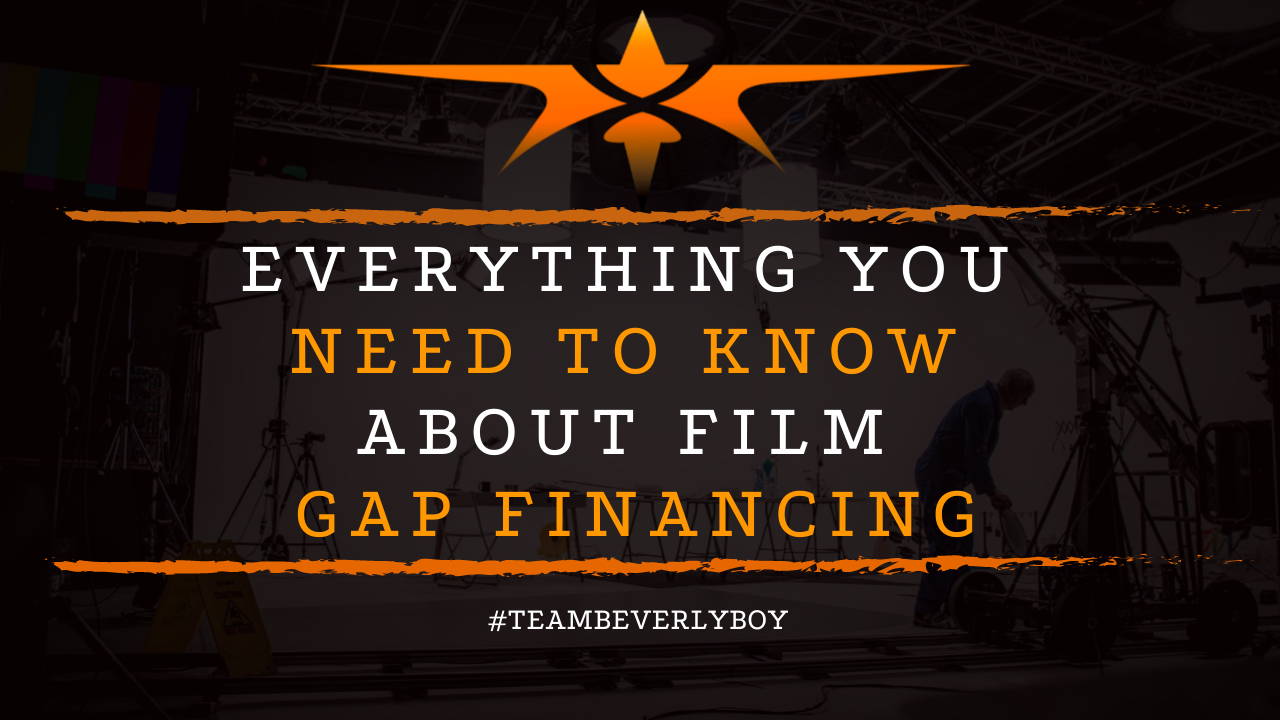
Everything You Need to Know About Film Gap Financing
You’ve got the script. You’ve got the production crew ready to go. And you’ve done a ton of hard work and you’re committed, and there’s only one more thing to take care of – funding. Securing the necessary financing for a film is an independent filmmaker’s greatest challenge. Far and wide, film financing can certainly be the impediment to success. But you said you were committed, right? Have you considered film gap financing?

What is Film Gap Financing?
Gap financing represents a one-time loan for filmmakers that funds the “gap” between any pre-sale funding that you have raised and the actual estimated film production budget.
The purpose of this particular form of financing is to provide a means of gap financing in the form of a single film loan. Which can play a small, but incredibly important role, in helping independent filmmakers see their film make its way into production.
Generally speaking, film gap financing is NOT the only form of film financing that you’re going to be concerned with. In fact, you’re probably going to exercise several other opportunities to get your film funded ahead of any decision to seek gap financing.
For instance, you’ll probably use a combination of tax credits, pre-sales, distribution deals. And maybe even donations or crowdfunding before you turn to film gap financing.
What’s the Criteria for Film Gap Financing?
If you’re new to this, you may not have realized how challenging it actually is to secure gap financing – yet. But if you’ve been in the industry for a while, and you’ve worked the ropes long enough to know the challenges that come along with seeking financing for a film.
Then you probably know that there are only a handful of lenders at a given time that are willing to provide film gap financing.
Risks
This is because gap financing is predominantly risky. Much like many other forms of film financing can be. Particularly, financing a single film will always be a more risky situation than financing a multi-film project can be.
Requirements
Banks that are involved in film gap financing are going to require filmmakers to meet certain, potentially strict, requirements. Before they will provide the necessary gap funding that you need to get your production off the ground.
While lender criteria for film gap financing will definitely vary based on the lender.
You might be required to meet the following criteria:
- Prove that you have already raised 60% or more of the production budget through other forms of funding. Such as crowdfunding, donations, pre-sales, and other means.
- Depending on your background, credit criteria and other details. The lender may require that you have 80% of the financing already secured.
- Have a sales agent that has a reputable reputation in the industry. And can prove they’ve successfully worked gap financing deals in the past.
- Prove sales estimates of 1.5 to 2 times the required estimates needed to cover the gap.
Reputation
As is the likelihood with any other loan, when it comes to film gap financing the reputation, credit worthiness, and relationship between the bank and producer will be key areas of importance. As the lender makes their decision whether or not to provide funding.
Why are Pre-Sales so Important to Gap Financing Deals?
You’re probably wondering why pre-sales keep coming up in the equation. Lenders use pre-sales as a key qualification criteria for film gap financing for a number of reasons. Primarily, pre-sales prove to the lender that there is interest for this type of film in the market.
Thus, the more progress you can make in securing pre-sale agreements, the more trust you’re going to draw from the lender. A film that cannot gain interest from other lenders or that has trouble otherwise securing pre-sales, will certainly struggle to pass the criteria test of the gap lender.
Beware, Gap Financing can be Costly!

Before you stop what you’re doing and start looking for gap financing, it’s important for you to realize that film gap financing can be quite costly. In fact, lenders have been known to charge between 7 and 15 percent on top of the gap financing amount for loans, plus interest.
Thus, you could find yourself paying substantially more for the portion of funds that are required to bridge the gap between pre-sales and the actual production budget.
Gap financing transactions are risky for the lender. So they want to make sure that it’s worth the risk to them. The addition of a percentage on top of the interest charges that are already tacked onto the loan.
Making the risk a bit more rewarding in the end. But these costs must be carefully considered so as not to bury yourself.
How Long will I Have to Pay the Loan Back?
As with other loans, film gap financing loans have variable rates, rules, and criteria based on the individual lender and the circumstances of the particular transition. If you’re wondering how long you’ll have to pay back your gap loan if you are approved?
The answer really depends on the actual terms of the agreement you make with your lender. However, the majority of the time the bank will provide the filmmaker between 12 and 24 months to establish the necessary sales required to pay the original loan off.
Since interest is charged from the time the loan is initiated until it is fully repaid, it is in your best interest to pay the gap financing back as soon as possible after you have taken the loan. This will save you from paying back extensive amounts of interest on the loan.
Just as with any other kind of investment, putting all your eggs in one basket certainly has more risk than if you were to invest in a variety of businesses.
Alternatives to Film Gap Financing
Since film gap financing is costly, provides only a small percentage of the overall budget required to produce your film, and has so many criteria involved in order to be approved by a lender.
You’re probably already wondering about alternative film financing opportunities? Before you jump to gap financing.
Consider all of the following options first:
- Film tax credit financing.
- Distribution deals.
- Pre-sales.
- Product placement deals.
- Profit participation deals.
- Film grants.
- Private investors.
- Location incentives.
- Donations and crowdfunding.
- Deferred payment agreements.
In Summation
All of these can help you to offset the costs of your production in some way so that you can get that much closer to having your film produced without the need for gap financing.
However, in the event that you’ve exercised all of the options listed, and you’re close to meeting your production budget, you can consider filling the gap with film gap financing from a qualified lender.



